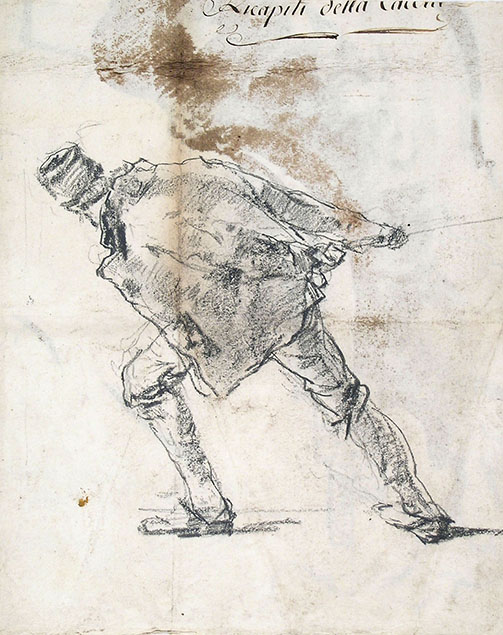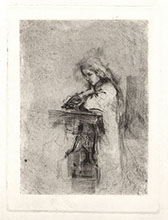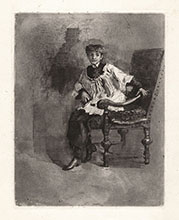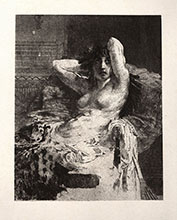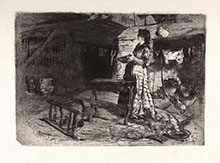(Monza 1840 - 1904)
A STANDING FISHERMAN, SEEN FROM THE BACK, PULLING A ROPE
Black chalk, inscribed in pen Ricapiti della..... On the verso architectural studies in brush and brown ink, the ink partly appearing through recto. PROVENANCE: inscribed on verso in black chalk Disegno originale di Mosè Bianchi / proveniente dalla Collezione Botta / Dicembre 1964 / Giorgio Fubini. Gustavo Botta owned several drawings by Mosè Bianchi; see the catalogue Vendita all'asta della collezione Botta, galleria Scopinich e F., Milan, 1934. 285 x 235 mm. The drawing can be connected with a few paintings by Bianchi showing fishermen in Chioggia (Venice) rescuing boats from the sea, the most famous being Laguna in burrasca (1879). See Paolo Biscottini, Mosè Bianchi, catalogo ragionato, Milan 1996; no. 276.
Mosè Bianchi enrolled at the Accademia di Belle Arti at the Brera, Milan, in 1856. In 1859 he temporarily abandoned his studies to fight in the second Italian War of Independence, returning to Milan to study under Giuseppe Bertini. Among his fellow students was Tranquillo Cremona, whose involvement with the Scapigliati later had an impact on Bianchi’s work. In 1862 Bianchi exhibited his first large-scale independently painting. He continued to exhibit regularly and in 1866 he was awarded the Pensionato Oggioni, which enabled him to visit Venice, Paris and Rome. During this period Bianchi met the artists Mariano Fortuny y Marsal and Ernest Meissonier, and the dealer Goupil, who inspired him to produce a series of 18th-century genre scenes. Eighteenth-century influences, especially the work of Giovanni Battista Tiepolo, were also important for his many fresco cycles. Bianchi continued to attract attention with his views of Chioggia and Milan, these frequently providing the background for genre scenes. He was also a sensitive portraitist and made etchings. Notwithstanding his intense activity and continued public success, Bianchi spent his final years in poverty, assisted by his nephew, the painter Pompeo Mariani.
